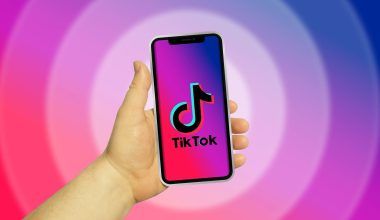If you’re an independent artist, you’ve probably asked yourself how to share your song on all streaming platforms without a label. It might seem daunting, but with the right tools and strategies, it’s easier than ever. The digital age has democratized music distribution, giving artists like you the power to share your music with the world without needing a record label. This guide will walk you through the process step by step, ensuring your music reaches a global audience.
Gone are the days when signing with a label was the only way to get your music out there. Today, being independent means you can control your music, your creative direction, and most importantly, your revenue. Sharing your song without a label also means you can maintain complete ownership of your work. For many artists, this independence is a game-changer.
Streaming platforms like Spotify, Apple Music, Amazon Music, and others have made it simple for anyone to upload and share their songs. The real trick is knowing how to navigate the tools and services that help make this possible.
Step 1: Prepare Your Music
Before you even think about distribution, ensure your song is ready. This means high-quality production, proper mixing and mastering, and a final product that resonates with your audience. Use professional tools or hire experts to give your track that polished, studio-quality sound.
Next, consider creating album artwork. Platforms often require cover art that meets specific guidelines, so make sure it’s high-resolution and visually appealing. Your cover art is the first thing listeners see, so it should reflect your brand and music style.
Step 2: Choose a Digital Distribution Service
To share your song on all streaming platforms without a label, you’ll need a digital distributor. These services act as the middleman, uploading your music to platforms like Spotify, Apple Music, Deezer, and even social media platforms like TikTok and Instagram. Popular digital distributors include:
- Deliver My Tune: Known for its affordability and simplicity, It offers unlimited uploads for a free distribution plan.
- TuneCore: A bit pricier but provides excellent support and analytics tools.
- CD Baby: Offers both digital and physical distribution, perfect if you’re planning to sell CDs as well.
- Amuse: A free option with premium plans for more features.
Each platform has its pros and cons, so take the time to research which one best fits your needs and budget.
Step 3: Register Your Music
To ensure you’re properly compensated for your work, register your music with a performance rights organization (PRO). In the US, you can choose between ASCAP, BMI, or SESAC. These organizations collect royalties on your behalf whenever your song is played on the radio, at a venue, or even online.
Additionally, register your track with SoundExchange for digital performance royalties. Don’t forget to get an ISRC (International Standard Recording Code) for your song. Most distributors provide one automatically, but it’s essential to have it for tracking and royalties.
Step 4: Upload Your Song
Once you’ve chosen a distributor, it’s time to upload your song. During this process, you’ll need to:
- Enter your song title, artist name, and other metadata.
- Upload your audio file (usually in WAV or FLAC format).
- Add your album artwork.
- Choose a release date.
Distributors often recommend setting a release date at least four weeks ahead to allow time for platform approval and potential playlist consideration.
Step 5: Promote Your Song
Releasing your song is just the beginning. Promotion is crucial to ensuring your music reaches the right ears. Here are some ways to do it effectively:
- Social Media: Use platforms like Instagram, TikTok, and Twitter to share snippets, behind-the-scenes content, and teasers.
- Email Marketing: Build an email list of fans and send them updates about your release.
- Music Blogs and Playlists: Submit your song to blogs and independent playlists for more visibility.
- Collaborations: Partner with other artists or influencers to reach a broader audience.
Step 6: Track Your Performance
Most streaming platforms provide analytics tools to help you monitor your song’s performance. Pay attention to metrics like plays, saves, and playlist adds. These insights can guide your future promotion efforts and show you where your music is resonating most.
Benefits of Sharing Without a Label
When you share your song on all streaming platforms without a label, you gain full control over your music. Here are a few key benefits:
- Higher Revenue: You keep a larger share of your earnings.
- Creative Freedom: Make the music you want without outside interference.
- Direct Fan Connection: Engage with your audience directly, without a middleman.
Common Challenges and How to Overcome Them
While sharing your music independently is empowering, it’s not without its challenges. Here’s how to tackle some common issues:
- Time Management: Balancing creation, promotion, and distribution can be overwhelming. Use tools like scheduling apps and calendars to stay organized.
- Promotion Budget: If funds are tight, focus on organic strategies like social media and free playlist submissions.
- Competition: With so many artists releasing music, standing out is tough. Develop a unique brand and story to capture attention.
Final Thoughts
Learning how to share your song on all streaming platforms without a label can seem complex, but it’s entirely doable. By preparing your music, choosing the right tools, and promoting strategically, you can successfully reach listeners worldwide.
Remember, the key is persistence. Success won’t come overnight, but with dedication and hard work, you’ll build an audience and grow your music career on your own terms.
For further reading, explore these related articles:
- Monetize Your Track on JioSaavn with 100% Royalties
- Monetize Your Track on JioSaavn Without Paying Fees
- How to Monetize Your Track on JioSaavn Across Multiple Platforms
For additional resources on music marketing and distribution, visit DMT RECORDS PRIVATE LIMITED.






